SAN ANTONIO (Day 3 - part 2)
The exhibit hall...


(right photo) The grey uniform is from a Texan (or Texian) soldier, although for most of the revolution there was no official attire since they were mostly just volunteers. The dark blue uniform is from a Mexican soldier. The different colored trim represented the various regiments. Their tall hats (or shakos) were made of leather.


Items from monestary life


A Presidio soldier was armed with a lance, short sword, carbine (compact, light rifle) and pistol. A leather jacket and leather shield provided protection against arrows.
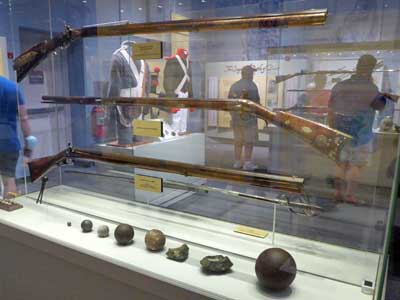




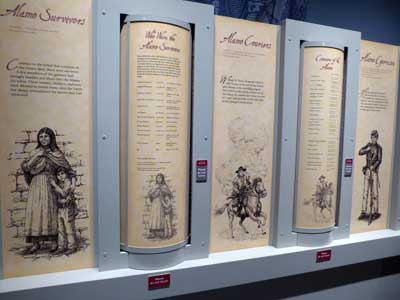

Cannons were along the rear wall of the roofless church.


A 9-pounder cannon

The final surprise attack at dawn, an illustration by Gary Zaboly


I absolutely loved all the detail! You could all but hear the sounds of the explosive gunshots and crackling fire...
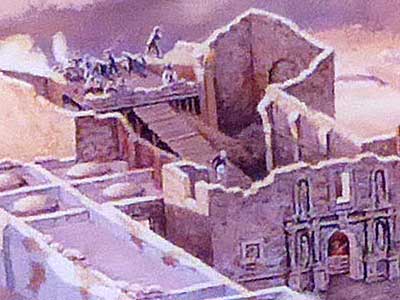

... and feel the realization of an inevitable painful death.
We made our way back across the compound by the gift shop. A long row of signs (the wall of history) led to the Calvary Courtyard. Here we wandered among several bronze statues. These were erected here in 2019 as part of the Alamo Sculpture Trail, a collection of 14 statues leading from the Alamo to the Briscoe Western Art Museum.




David "Davy" Crocket (1786 - 1836)
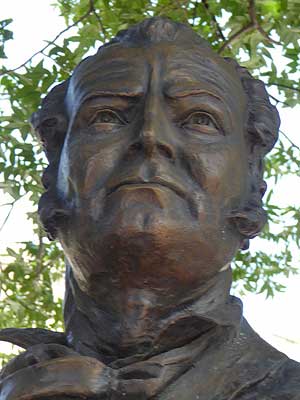

James Bowie (1796 - 1836); The Bowie knife (created by Rezin Bowie but made famous by his brother, James) was larger, heavier and sturdier than most knives. As such, it became a survival weapon capable of handling most tasks... hunting (skinning, gutting), camping (hacking firewood) and even self-defense.

William Barret Travis (1809 - 1836)


Susannah Dickinson (1814 - 1883) and John William 'El Colorado' Smith (1792 - 1845) both survived. He served as a courier and scout and later served as Mayor of San Antonio.
Next to it was the Convento Courtyard and the Long Barrack.

A well inside the compound meant that the old mission would never be cut off from water.


The Long Barrack contained the old residences, a kitchen and a hospital. The Alamo was the first recorded hospital in Spanish Texas. The military infirmary was established in 1805 by Manuel Antonio Cordero y Bustamante (the acting governor of Texas) to care for soldiers stationed on the frontier. Located in the former upper portion, it provided 30 beds with wooden frames in order to 'avoid the dampness of the ground.'

A sample hospital room.

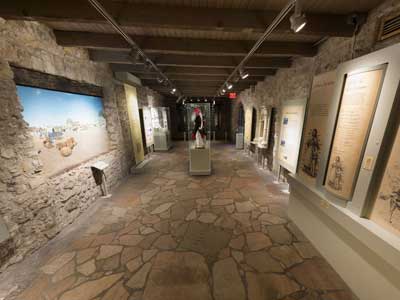
It was acutally closed but here are a couple stills from the virtual 3D tour is available on the Alamo's website.
We left and headed over to a far side of the outside plaza. This used to be the southwest corner of the walled fort. A platform holding a large cannon helped convey what it may have looked like. The cannon faced west across the San Antonio River towards the town, with a view of the cathedral.
The 18-pounder cannon was cast in Sweden and made its way to Texas via New Orleans. Upon its arrival in early December 1835, a carriage was constructed and it was moved to its position on the wall. It fired the shot in answer to General Santa Anna's perilous terms of surrender.
After the battle, the Mexican Army disabled it by spiking its muzzle and breaking off its trunnions and cascabel. It was then buried in a nearby trench. It was discovered in 1858 and moved to a nearby park. However, around 1917 it disappeared from its pedestal. This is a reproduction.
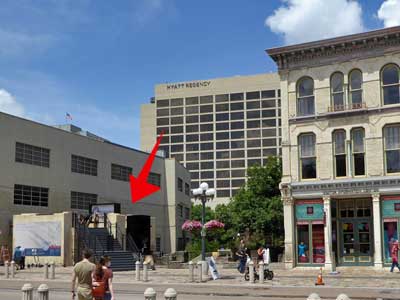





caliber: 18 pounder
weight: 2,000 pounds
length: 7 feet 8 inches
diameter of bore: 5.25 inches


The unburied cannon in 1858 ... and a photo of it in the park in 1910
return • continue

